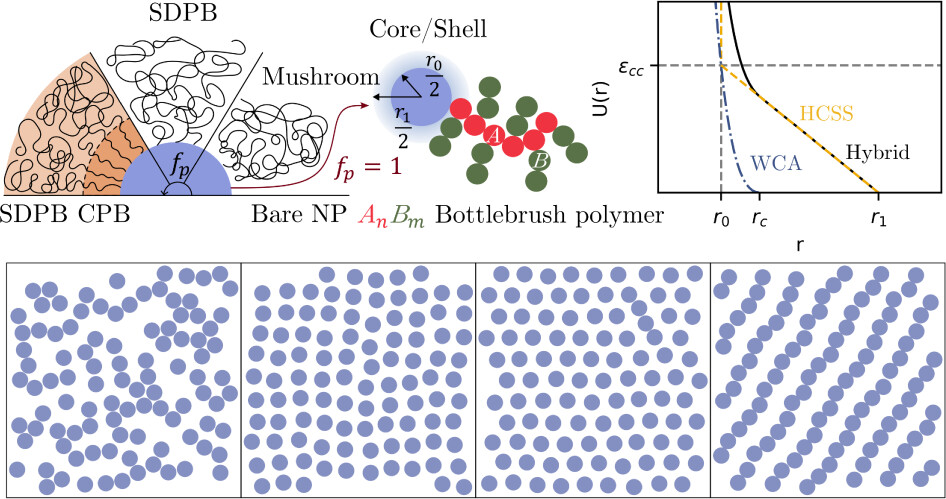are lined up under hard-core/soft-shoulder potential
Grafting polymer chains onto inorganic nanoparticles produces polymer-grafted core/shell nanoparticles. An intriguing addition to this material class is bottlebrush polymer-grafted metal nanoparticles, as we reported recently. While we considered immobilizing many chains on Au nanoparticles, in that case, to ensure dispersibility in solution (but not too much so they can collapse to expose the metal surface in a non-solvent), in this computational study, we investigated a rather exotic nanoparticle containing a single bottlebrush chain per particle through coarse-grained molecular dynamics simulations. We demonstrated that the tadpole-like shaped object at near-zero grafting densities —a regime that remains largely unexamined —results in interesting self-assembled morphologies through symmetry breaking. YongJoo Kim group at Korea University led this work and published in Langmuir recently:
SeoYeun Kim, Myungeun Seo, Ji Woong Yu, and YongJoo Kim, “Controlling 2D Nanoparticle Self-Assembly Mesophases via Symmetry Breaking Driven by Single Bottlebrush Polymer Conjugation”
https://pubs.acs.org/doi/10.1021/acs.langmuir.5c01468

Historically, the self-assembly of nanoparticles has relied on achieving a delicate balance between polymer chain packing entropy and energetic interactions. Traditional methods have focused on high grafting densities, which allow for the development of ordered phases but often complicate dispersion stability. Grafting a single bottlebrush polymer can break down the rotational symmetry of nanoparticles, introducing a unique structural polarity. This polarity can be fine-tuned through the design parameters of the bottlebrush polymers, offering unprecedented control over the self-assembled structures. This enhanced polarity stabilizes specific ordered phases, enabling the formation of diverse morphologies, such as hexagonal lattices, square lattices, and linear clusters. In particular, the uncommon linear clusters appear stable when the nanoparticle core is modeled using a hard-core/soft-shoulder (HCSS) potential, while the classic Weeks–Chandler–Andersen (WCA) potential yields bilayer-type strips. We have also studied more realistic grafting scenarios, such as the existence of dual-polymer grafted particles alongside bare NPs, which can improve the robustness of morphological stability.

